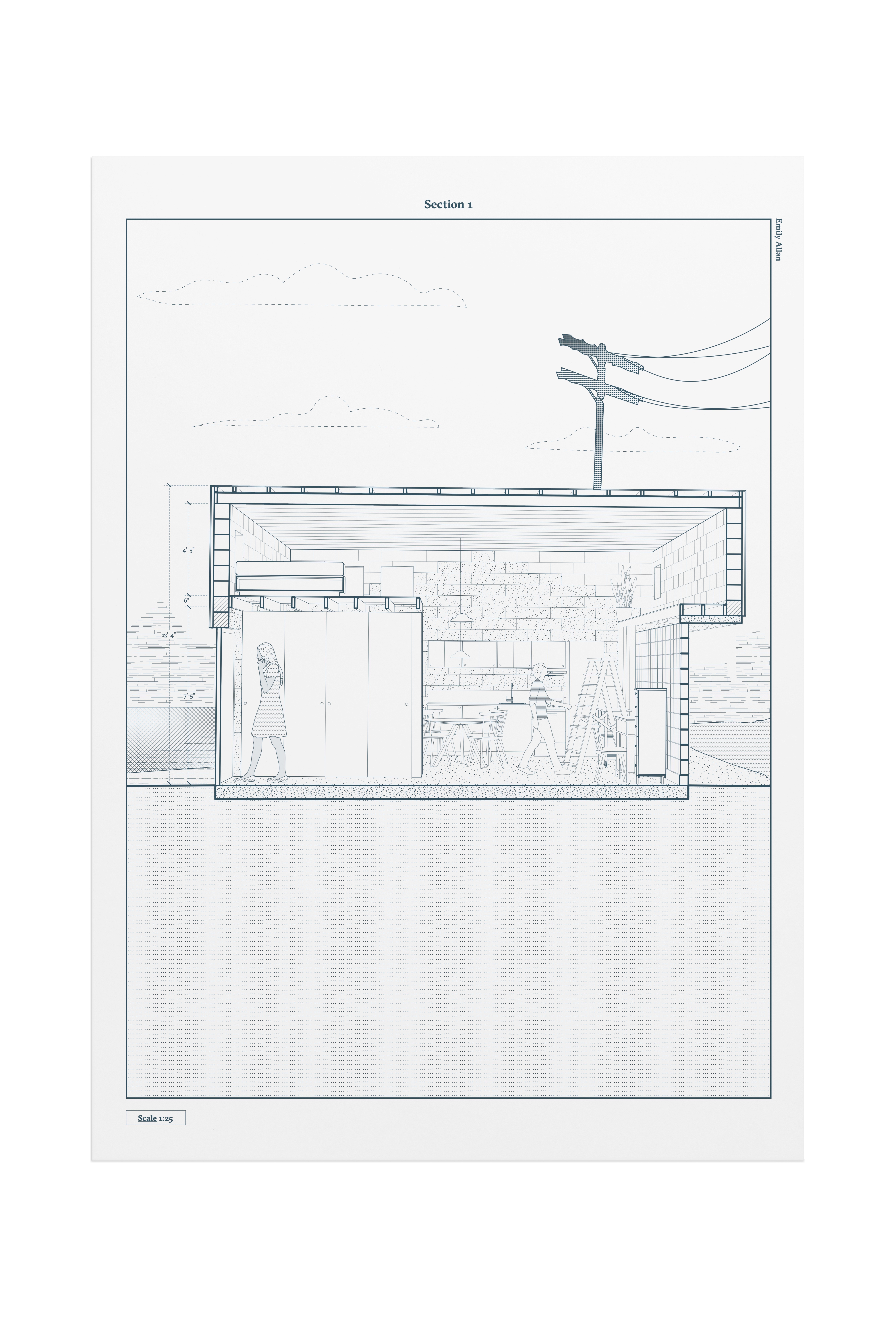Unnamed Laneway
design, illustration
2019

Awarded Best in Show at YES 2019.
At the back-end of our cities is a world of the ad-hoc “where casualness and improvisation shape the use and presence of buildings, and the life that occurs between them.” --David Winslow, 2016
This studio project was designed in response to Toronto’s 2019 by-law amendment which permitted the design and construction of laneway suites within the city’s downtown core. Unnamed Laneway frames the identity of urban laneway networks within future ways of living. This project falls within an experimental and speculative framework, bridging artistic narrative with laneway housing development to increase awareness of the movement’s powerful potential and to promote alleyway-culture’s connection with the future of Toronto’s new laneway housing developments.
In the age of condo-ism alternative efforts towards sustainable urban densification and affordable housing are more necessary than ever before.
Within Toronto’s urban core exists a challenge of promoting urban densification that counters the current polarization between our heritage neighbourhoods and new high-rise dwellings. Although laneway housing is not a complete solution, it offers a community-oriented approach within mature neighbourhoods that helps to maintain architectural diversity and promote a bottom-up heritage oriented development. Laneway housing combats the urban sprawl by encouraging infill housing and can help to fill the ‘missing-middle’ of housing accommodation in Toronto.
At the back-end of our cities is a world of the ad-hoc “where casualness and improvisation shape the use and presence of buildings, and the life that occurs between them.” --David Winslow, 2016
This studio project was designed in response to Toronto’s 2019 by-law amendment which permitted the design and construction of laneway suites within the city’s downtown core. Unnamed Laneway frames the identity of urban laneway networks within future ways of living. This project falls within an experimental and speculative framework, bridging artistic narrative with laneway housing development to increase awareness of the movement’s powerful potential and to promote alleyway-culture’s connection with the future of Toronto’s new laneway housing developments.
In the age of condo-ism alternative efforts towards sustainable urban densification and affordable housing are more necessary than ever before.
Within Toronto’s urban core exists a challenge of promoting urban densification that counters the current polarization between our heritage neighbourhoods and new high-rise dwellings. Although laneway housing is not a complete solution, it offers a community-oriented approach within mature neighbourhoods that helps to maintain architectural diversity and promote a bottom-up heritage oriented development. Laneway housing combats the urban sprawl by encouraging infill housing and can help to fill the ‘missing-middle’ of housing accommodation in Toronto.







